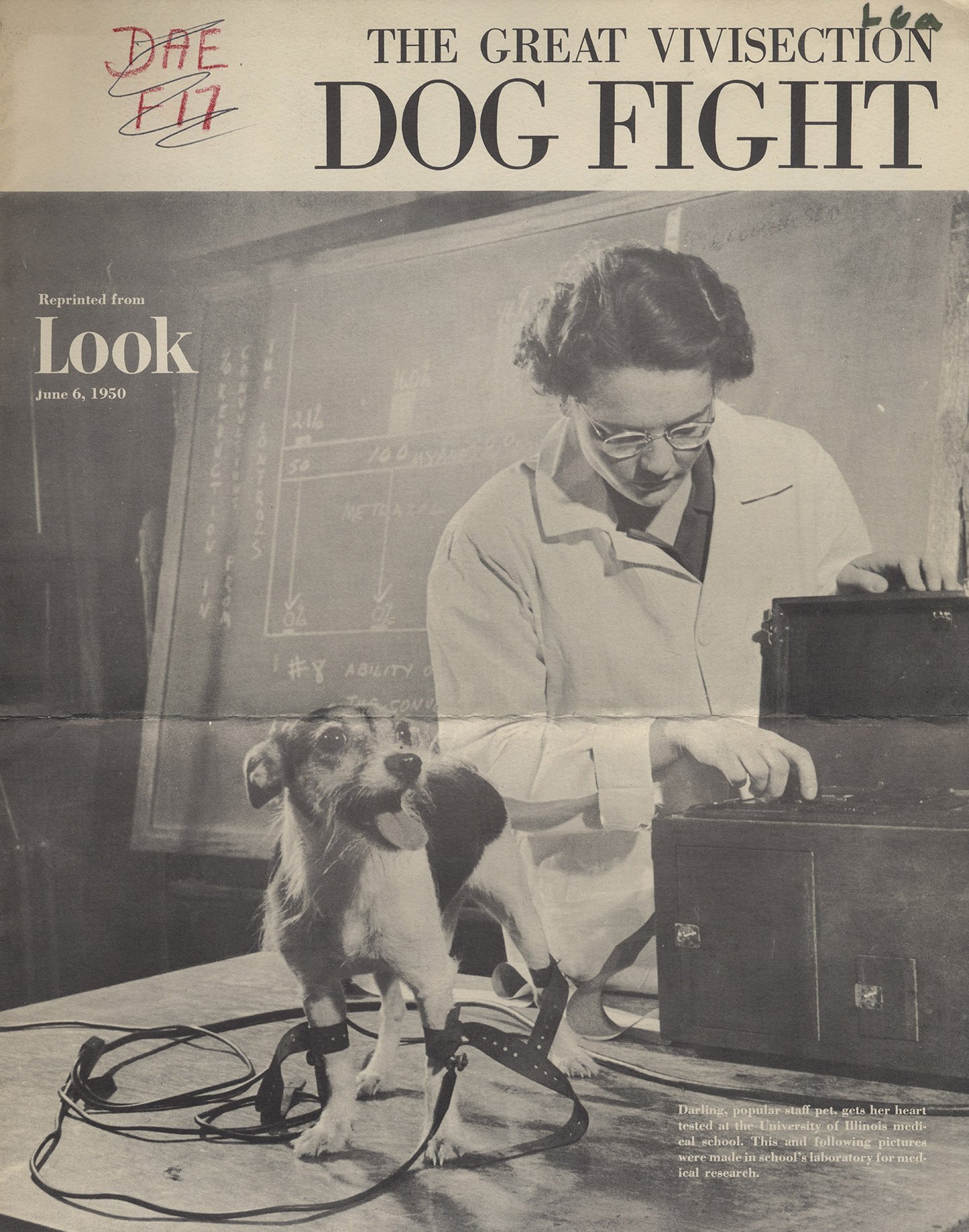The NSMR and the National Battle
The organized work of the ISMR disarmed antivivisectionists in Illinois. By the early 1940s, its members also increasingly recognized themselves as components of a nationwide struggle. The National Society for Medical Research (NSMR) emerged in 1945 to unite that work and presented a stark choice to Americans—asking, would they support the continued march of science via animal research or return to darker times of superstition and death?
The NSMR shared this message in a newly published bulletin, which included standardized tactics for defeating local humane society legislation, as well as in radio broadcasts, pamphlets, newspapers, and magazines. Two threads of their argument proved difficult to resist. The Second World War had stressed the importance of advanced medical techniques, and the NSMR frequently presented military veterans, many now studying medicine on GI grants, in their campaigns against antivivisection legislation. The other line of argumentation looked forward to the future. The “Blue Baby” procedure, developed by Alfred Blalock, Helen Taussig, and Vivien Thomas at Johns Hopkins University, showed that infants with certain forms of congenital heart disease could be saved. First tested on dogs in Baltimore, the procedure was widely touted by members of the NSMR. Coming at the dawn of the baby boom, arguments for the necessity of saving America’s children were undeniably compelling.

